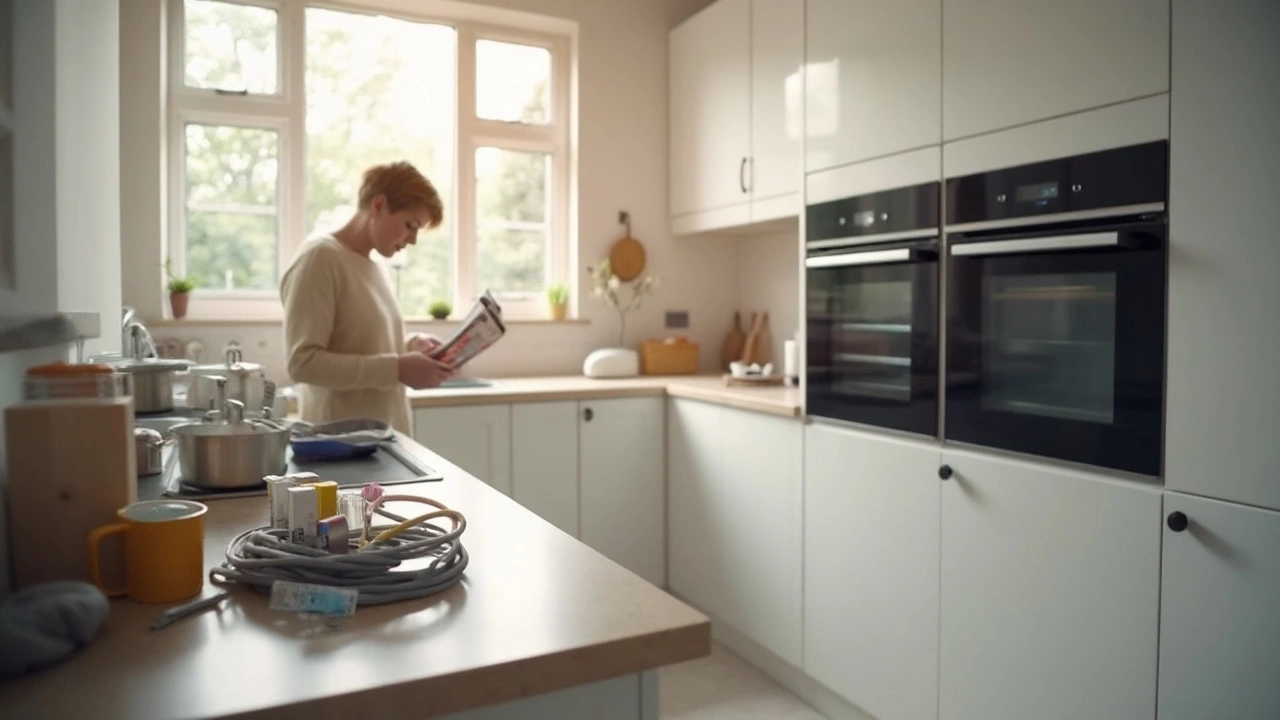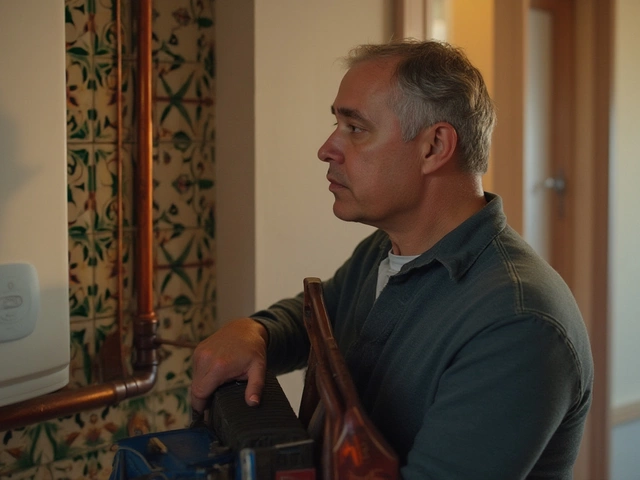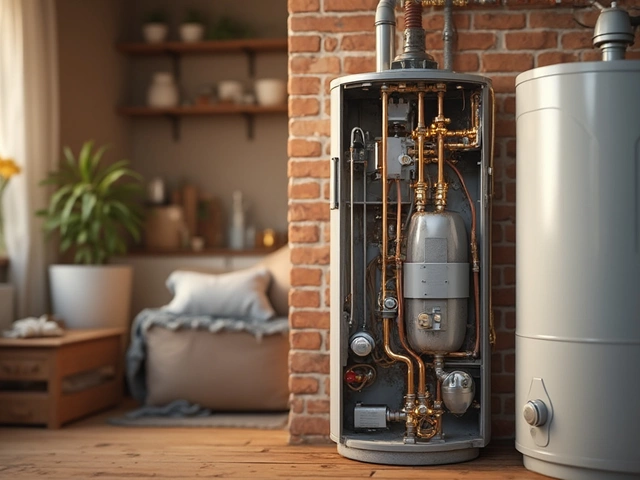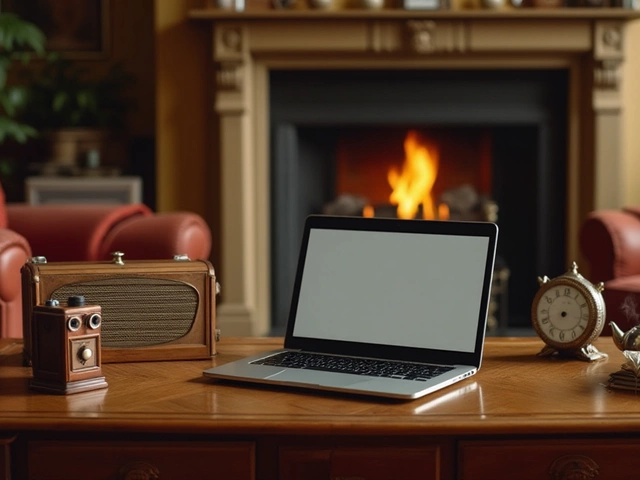Think it’s as simple as unplugging the old one and plugging in a shiny new electric oven? Not so fast. Most electric ovens aren’t like toasters or microwaves—you can’t just stick them in a regular outlet. The power needed for a standard electric oven is way higher than what that everyday kitchen socket can handle.
If you try to plug a big oven into the wrong type of outlet, you could trip a breaker, blow a fuse, or even melt a cord. That’s why most full-sized electric ovens use a special heavy-duty circuit, usually a 240-volt outlet. These look much chunkier than your usual plugs and have thicker cords. If you don’t have one already, stop right there—this isn’t something you can rig up with an extension cord.
- Why Most Ovens Aren’t Plug-and-Play
- Understanding Electric Oven Power Requirements
- The Deal with Outlets and Wiring
- What Happens If You Get It Wrong?
- Tips for a Smoother Installation
- When It’s Time to Call an Expert
Why Most Ovens Aren’t Plug-and-Play
Here’s the deal with electric ovens: they take a lot more juice than almost any other home appliance you’ll find in your kitchen. A typical wall outlet runs on 120 volts, but electric ovens usually want 240 volts. That’s double. You can’t just swap a fridge with an oven and expect everything to work the same.
The wiring behind the wall is a big part of the story. Plugging a high-powered oven into a regular circuit will overload it almost every time. Even new houses might not be set up with the right hookup in every kitchen. Figuring out what you’ve got on the wall is step one—but there’s no universal standard for oven plugs or sockets. Some ovens use three-prong plugs, others have four, and a few are hardwired right into the wall, skipping plugs entirely.
If you look at instruction manuals for just about any modern electric oven, you’ll see warnings about using the wrong outlet. They aren’t just protecting themselves—wrong wiring means real danger. Mishandling that much electricity is a common cause of kitchen house fires, and according to the U.S. Fire Administration, cooking appliances account for nearly half of all home fires.
- Ovens need dedicated 240V circuits, not standard 120V outlets.
- Outlet types can vary—always check your oven’s requirements before buying or swapping anything.
- Switching from gas to electric is a totally different ballgame. Don’t expect an instant swap with just a plug.
Bottom line: if you see a big, awkward plug or a thick wire coming out the back of your old oven, you probably need something more than an ordinary outlet. Cutting corners leads to blown fuses, tripped breakers, or worse. Play it safe from the start when dealing with oven installation and kitchen safety.
Understanding Electric Oven Power Requirements
If you’re thinking of swapping out your own electric oven, you really need to get how much power these things use. This isn’t a device that quietly sips electricity—it demands way more juice than stuff like your fridge or dishwasher. Most standard electric ovens pull about 4,000 to 6,000 watts when they’re running, which is pretty hefty.
Here’s where people get tripped up: most of the outlets in your kitchen are set up for 120 volts, but nearly every built-in oven needs a 240-volt supply. That’s double the regular wall outlet. If you check the back of an oven or peek at the manual, you’ll often see something like "240V, 60Hz, 40A," which means it wants a 240-volt line and can pull up to 40 amps when maxed out.
| Oven Model | Voltage Needed | Amps | Max Watts |
|---|---|---|---|
| Standard Wall Oven | 240V | 30-40A | 4,800-6,400W |
| Freestanding Range | 240V | 40-50A | 5,000-8,000W |
| Compact Oven | 120V | 15-20A | 1,500-1,800W |
If you look at your breaker panel and see a double-width breaker labeled "Oven" rated for 30 amp or more, that means your house is set up the right way. Anything less, and the wiring can overheat or your oven just won’t work right. There are a few compact ovens that’ll run on a standard plug, but those are usually the mini countertop kind, not big enough to roast a turkey.
Bottom line: Before you go shopping, make sure you check your current outlet and read your oven’s label. You don’t want to fry circuits or risk a fire because of a quick assumption. Power matters, and with oven installation, there’s no winging it.
The Deal with Outlets and Wiring
If you’re looking to put in a new electric oven, don’t expect to just use any regular kitchen plug. Ovens usually call for a dedicated 240-volt outlet, not the standard 120-volt outlets you use for coffee makers and blenders. This higher voltage is what lets a modern oven heat up without overloading the circuit or causing a safety hazard.
Take a quick look at your kitchen wall. See a big, round outlet with three or four thick holes? That’s your oven’s home. Plugging a plug in oven into anything less is asking for trouble. American kitchens typically have either a 3-prong or 4-prong 240-volt outlet for large appliances. The 4-prong version, which has been standard since around 1996, includes a separate ground wire for better shock protection.
Wiring is just as important. An oven installation usually requires a separate 40 to 50-amp circuit wired directly from your breaker panel. These wires are much thicker than what runs to your regular outlets—15-amp kitchen outlets just can’t handle it. A mismatched cable or outlet can lead to burnt wires or even a house fire, so matching everything up is key.
| Outlet Type | Voltage | Amperage | Appliance Examples |
|---|---|---|---|
| Standard (NEMA 5-15) | 120V | 15A | Toasters, Microwaves |
| Oven (NEMA 14-50) | 240V | 40-50A | Ovens, Ranges |
If you’re replacing an old oven, double-check if your home’s outlet matches the prong type of your new model. Some new ovens even ship without a power cord because manufacturers expect installation by a pro who’ll wire it up right on-site. For apartments or older homes, don’t be surprised if the outlet is outdated or mismatched—upgrading the wiring may be part of the job.
Bottom line: If you ignore the right outlet and wiring for your home appliances, you’re rolling the dice with both your oven’s lifespan and your home’s safety. It’s just not worth the risk.
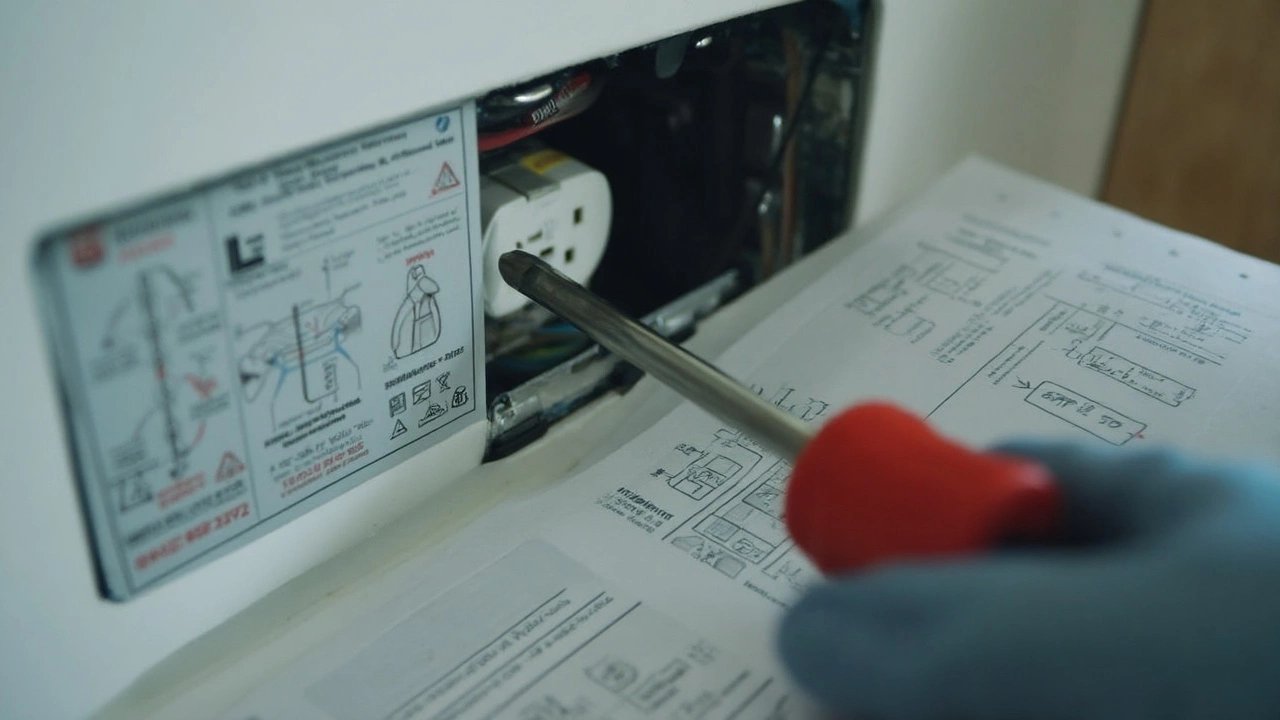
What Happens If You Get It Wrong?
Messing up an electric oven installation isn’t just an inconvenience—it can actually be dangerous. A lot of folks think that getting the wires or outlet wrong will just mean the oven doesn’t work. In reality, it can spike your risk for fires, shocks, or major electrical damage.
If you wire your oven to a regular 120-volt outlet and it demands more power, the wiring can overheat in minutes. Overheated wires don’t just melt insulation; they can spark and cause a kitchen fire right behind your oven. According to the U.S. Fire Administration, electrical distribution and lighting equipment account for about 10% of all home fires in the country, and ovens and cooktops are a top source when it comes to kitchen fire origins.
Even if disaster doesn’t strike instantly, appliances connected incorrectly can burn out before their time. A circuit constantly tripping or a breaker that won’t reset are big red flags—those mean you probably have a mismatch in your power or an unsafe setup.
- If your oven installation isn’t grounded right, you could get a nasty electric shock just by touching the metal housing, especially if there’s any moisture around.
- In some cases, homeowners insurance won’t cover fire or damage caused by DIY electrical jobs gone wrong. That’s a headache you don’t want.
- Modern home appliances have built-in safety checks that may just refuse to work if they sense bad wiring, but older models aren’t as forgiving—they might just overheat or short out.
Bottom line? Installing a plug in oven incorrectly can create more hassle than it solves. Even “small” mistakes quickly turn into expensive repairs, safety risks, or both.
Tips for a Smoother Installation
Before you do anything, check your new electric oven's manual. Manufacturers aren’t kidding around—there’s a reason they mention the wiring diagram and the right amp rating. If you skip this part, you could end up with a fancy new appliance that just won’t turn on (or worse, trips the whole kitchen every time you bake a pizza).
Here are some practical steps that really make a difference:
- Measure your space twice. Ovens seem to get bigger every year, and even a half inch off can mean your oven won’t fit. Grab a tape measure before you slide anything into place.
- Match the plug and outlet. Most modern oven installations use either a 3-prong or a 4-prong 240V plug. Don’t force a three into a four, or vice versa—it’s a safety risk and can void your warranty.
- Check the breaker panel. Make sure your kitchen’s breaker can handle the amp draw of your new oven, which is often stamped right on the oven’s label. If the breaker’s smaller than your oven needs, you’ll need an upgrade first.
- Clean up old connections. If you’re switching out something ancient, look for burnt wires or frayed cords. Reusing sketchy wiring is dangerous.
- Don’t rush the leveling. An off-balance oven cooks unevenly and slides around. Most ovens have adjustable feet—take a minute to make sure it stands steady.
If you like numbers, here’s a basic look at the average power needs of standard electric ovens compared to small kitchen appliances:
| Appliance | Voltage (V) | Amps (A) |
|---|---|---|
| Electric Oven | 240 | 30-50 |
| Toaster | 120 | 7-12 |
| Microwave | 120 | 10-15 |
One last thing—document everything. Snap photos of the old setup before you unplug, and write down which wires go where. Even pros do this so they don’t get surprises halfway through. If something feels off, there’s no shame in asking for help. Saving a few bucks on DIY isn’t worth frying your new oven—or your kitchen circuits.
When It’s Time to Call an Expert
Not sure if you’re ready to handle the wiring for a electric oven? You’re far from alone. Most homeowners reach a point where they feel out of their depth—and that’s a good thing. Messing with household wiring or heavy appliances when you’re not sure what you’re doing can get dangerous in a hurry. Electricity is nothing to mess around with, especially with the higher voltage most ovens use.
If you spot any of these signs, grab your phone and get a licensed electrician on board:
- Your kitchen doesn’t already have a 240-volt outlet that fits the new oven’s plug.
- You see odd wiring, exposed wires, or any sign of burning or discoloration on the outlet or cord.
- Your home’s electrical panel is old, crowded, or the breakers keep flipping when you run big appliances.
- You’re not 100% sure which breaker controls the oven circuit (don’t just guess and hope for the best).
- The manual says the oven needs to be “hardwired” (connected directly to your home’s wiring) instead of just plugged in.
Statistics show that electrical problems cause nearly 47,700 house fires every year in the U.S., and kitchen appliances play a big part in that. Proper oven installation reduces those risks dramatically.
| Reason to Call an Expert | Potential Risk |
|---|---|
| No right outlet | Fire or broken oven |
| Wrong or old wiring | Electric shock, fire |
| Breakers keep tripping | Overloaded circuits |
| Needs hardwiring | Complex install; code violation if DIY |
A licensed electrician can check your wiring, fix outlets, and set up your electric oven so you can use it safely right away. Plus, your homeowners insurance might require professional work to cover damages in case something bad happens. Don’t gamble with kitchen safety—sometimes saving a few bucks just isn’t worth it.
